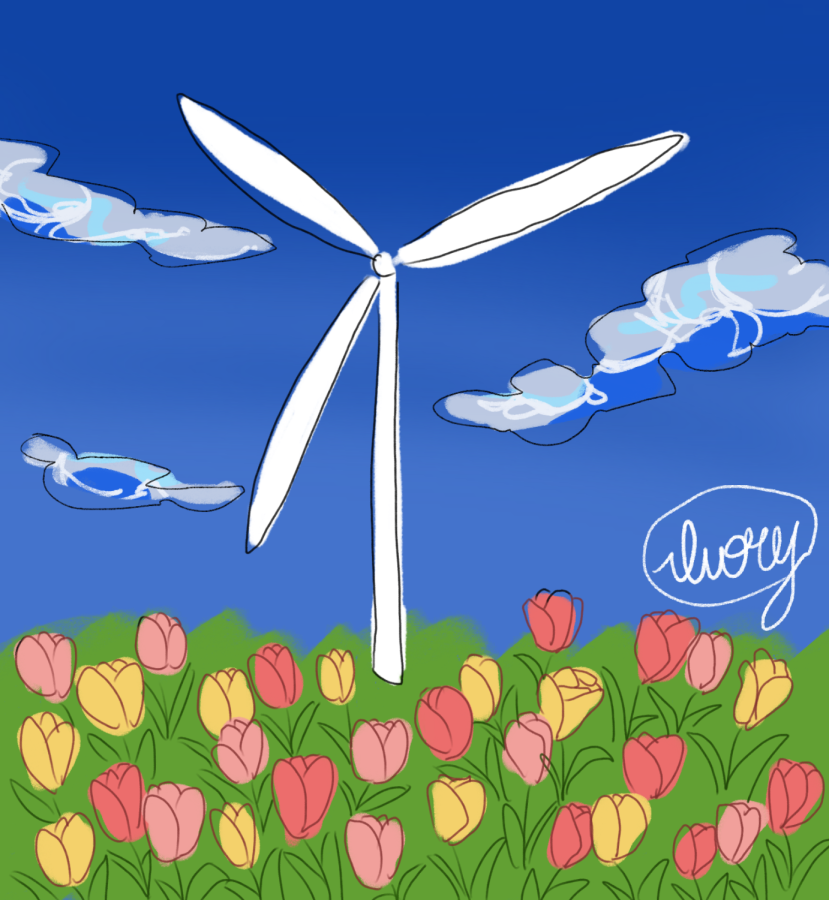Political: Norwegian Wind Farms
April 17, 2023
More than any other single commodity, oil is the lifeblood of the Norwegian economy. 60% of the nation’s exports consist of oil and natural gas, and the total value of oil produced domestically amounts to 832 billion Norwegian kroner per year. Despite the national economy’s heavy dependence on oil revenue, the Norwegian government has attempted in recent years to diversify domestic production, pouring funds into green energy projects in an attempt to appeal to a younger, more environmentally-minded generation of Norwegians. But some of these initiatives have faced backlash from the very constituencies they relied on for support, especially the erection of two new wind farms in the province of Fosen. A broad coalition of youth environmental activists and indigenous people have come together to oppose the construction of these turbines on the grounds that they disrupt reindeer herding, a historical tradition of the indigenous Sami peoples. Since 2021, when a Norwegian court ruled that the turbines must be taken down, the government and activists have been caught in a deadlock, attempting to come to a common solution that preserves both of their interests. While the essential rights of the Sami to self-determination and the preservation of their cultural heritage must be vigorously defended, destroying functional wind farms in the process will only serve to hinder the growth of Norway’s green energy sector, sacrificing long-term environmental health and progress on indigenous rights for short-term quieting of discontent.
In both economic and social terms, the costs of removing the established wind farms in Fosen clearly outweigh the benefits. The monetary costs of actually taking apart the structures are clear, but beyond the explicit cost of demolition, Norway also loses the thousands of hours of manpower and millions of dollars it invested in the massive infrastructure project. Storheia, one of the wind plants impacted by the protests, is Norway’s largest wind farm in terms of energy output. Losing such an important plant would set back the country’s energy program by nearly a decade—these farms were first licensed for construction in 2010 and took many years to develop. Scrapping existing projects would increase Norway’s reliance on oil and natural gas for energy, only further entrenching the power of fossil fuel companies over the economy. Moreover, the shutdown of functional green energy initiatives risks disincentivizing further investment in clean generation projects by the government in the future. When the government and private firms see investments in wind energy as risky, especially during a time of increased energy need in Europe due to a lack of access to Russian natural gas, they are more likely to prioritize the development of traditional energy projects, harming Norway’s future environment and precluding sustainable development initiatives.
Critics who point out that these wind farms disrupt traditional practices and infringe on the rights of the Sami are absolutely correct in their staunch defense of indigenous communities. However, the rolling back of green energy initiatives only serves to threaten the long-term sustainability of the Sami’s own cultural practices. Reindeer herding is an essential part of the Sami’s cultural heritage, but reindeer habitats around the world are in decline as global warming continues to wreak havoc on Earth’s biosphere. To protect these habitats, green energy projects like the one in Fosen must continue to be developed the world over. This does not, of course, mean that the voices of the Sami should be ignored. The Norwegian government, while correct to pursue environmentally friendly energy initiatives, should not have infringed on traditional Sami land to do so. The only sustainable solution to the Fosen conflict today is to respond directly to the local communities’ concerns by codifying the long-term rights of indigenous people to the land while keeping the existing turbines in place for the time being. As reported in the Norwegian newspaper Klassekampen, some reindeer herders in the region are willing to compromise with the government and allow the turbines to remain up for the time being, as long as they continue to have access to the land for herding purposes and gain a promise for the turbines to be taken down within the next 20 years. Such a proposal would give the government ample time to fund new projects to supplement and replace these wind farms before having to dismantle the turbines in Fosen, granting Norway energy security and civil peace for the time being. Rather than being pit against each other, the twin priorities of environmental justice and indigenous rights must be dealt with in tandem—for we cannot have one without the other.







































